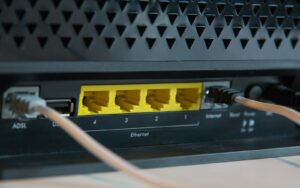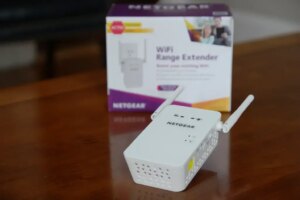Understanding different computer monitor connection types like HDMI, DisplayPort, VGA, DVI, USB-C, and Thunderbolt is key to optimizing your viewing experience, whether for gaming, professional tasks, or simply enjoying high-quality visuals. Let’s get into it.
HDMI: The Versatile Standard
HDMI (High-Definition Multimedia Interface) has become the go-to standard for many devices. It’s a single cable that carries both audio and video signals, making it incredibly convenient. HDMI is widely compatible with a range of devices, from gaming consoles and Blu-ray players to laptops and TVs.
There are several HDMI versions, each with its own specs:
- Standard HDMI: Supports resolutions up to 1080p.
- High Speed HDMI: Enables 4K resolution support.
- Premium High Speed HDMI: Designed for HDR (High Dynamic Range) content.
- Ultra High Speed HDMI: Offers HDMI 2.1 features, including uncompressed 8K video and higher bandwidth.
HDMI is a fantastic choice for most users, thanks to its versatility and ease of use. It’s perfect for connecting your computer to a TV or external monitor.
DisplayPort: The High-Performance Choice
DisplayPort is a high-performance interface designed with PC users in mind. It provides a higher bandwidth compared to HDMI, making it ideal for gaming monitors and displays with high refresh rates.
Key differences between DisplayPort and HDMI:
- DisplayPort supports higher resolutions and refresh rates.
- DisplayPort allows daisy-chaining multiple monitors.
- HDMI is more common in consumer electronics, while DisplayPort is more prevalent in PCs.
DisplayPort has several versions: 1.2, 1.3, and 1.4. Each successive version offers improved bandwidth and features. Mini DisplayPort is a smaller variant often found on laptops and graphics cards.
If you’re a gamer or content creator seeking the best possible performance, DisplayPort is the way to go.
VGA: Legacy Analog Connection
VGA (Video Graphics Array) is a legacy analog connection standard that has been around for decades. While it was once the primary means of connecting monitors to computers, it has largely been phased out in favor of digital alternatives.
VGA has several limitations:
- It only supports analog signals, which can result in lower image quality.
- It doesn’t carry audio, requiring a separate cable for sound.
- It has limited resolution support compared to modern digital standards.
Despite its drawbacks, VGA can still be useful in certain situations, such as connecting to older devices or projectors.
DVI: Bridge Between Analog and Digital
DVI (Digital Visual Interface) was introduced as a bridge between analog VGA and newer digital standards. It can carry both analog and digital signals, depending on the specific DVI type.
There are several DVI types:
- DVI-D (Digital): Carries only digital signals.
- DVI-I (Integrated): Supports both digital and analog signals.
- Single Link: Supports resolutions up to 1920×1200.
- Dual Link: Enables higher resolutions up to 2560×1600.
DVI offers better image quality than VGA and can be a good choice if you have an older monitor with a DVI port.
USB-C: One Port to Connect Them All
USB-C has emerged as a versatile all-in-one connector. With the right adapter or cable, a single USB-C port can handle video, audio, data, and even power delivery.
USB-C’s Alt Mode allows it to output video signals, making it compatible with HDMI, DisplayPort, and other video standards. This means you can connect your USB-C equipped laptop or tablet directly to a monitor without the need for additional adapters.
Some of the advantages of USB-C include:
- Reversible connector, making it easy to plug in.
- Ability to carry video, audio, data, and power over a single cable.
- Support for high resolutions and refresh rates, depending on the specific USB-C implementation.
Many modern monitors come with built-in USB-C ports, providing a clean and clutter-free setup.
Thunderbolt: Speed and Expandability
Thunderbolt is a high-speed interface developed by Intel and Apple. It combines PCI Express and DisplayPort into a single connection, offering incredible bandwidth and versatility.
Thunderbolt has gone through several versions, each offering increasing speeds:
- Thunderbolt 1 and 2: 10 Gbps
- Thunderbolt 3: 40 Gbps
- Thunderbolt 4: 40 Gbps with improved compatibility and minimum performance requirements
One of the standout features of Thunderbolt is its ability to daisy-chain multiple devices, including monitors. This means you can connect several displays to a single Thunderbolt port on your computer.
Thunderbolt docks and hubs have become popular accessories, allowing users to expand their connectivity options and streamline their setups.
Factors Affecting Video Quality
When choosing a monitor and connection type, there are several factors that can impact video quality:
- Resolution: Refers to the number of pixels displayed on the screen. Common resolutions include 1080p (1920×1080), 1440p (2560×1440), and 4K (3840×2160). Higher resolutions offer more detail and clarity.
- Refresh Rate: Measured in Hertz (Hz), refresh rate indicates how many times per second the display refreshes the image. Higher refresh rates (e.g., 144Hz) result in smoother motion, which is especially beneficial for gaming.
- HDR (High Dynamic Range): HDR-capable displays can produce a wider range of colors and brightness levels, resulting in more vivid and lifelike images.
- Compression and Chroma Subsampling: Some video signals may be compressed or use chroma subsampling to reduce bandwidth requirements. This can result in reduced color accuracy or image quality, especially at higher resolutions.
Choosing the Right Port for Your Needs
With so many connection types available, it can be overwhelming to choose the right one for your needs. Here are some general recommendations:
- Gaming Monitors: If you’re a gamer, look for a monitor with DisplayPort or HDMI 2.1. These standards offer high refresh rates and low latency, which are essential for smooth gameplay.
- General Use Displays: For everyday computing tasks, HDMI or USB-C are great choices. They provide excellent image quality and wide compatibility with various devices.
- Professional/Content Creation: If you work with high-resolution video or graphics, consider a monitor with DisplayPort or Thunderbolt. These interfaces offer the bandwidth necessary for demanding visual workloads.
- Troubleshooting Display Issues: If you’re experiencing display problems, make sure your cables are securely connected and check if you’re using the correct input on your monitor. Trying a different cable or port can also help isolate the issue.
Planning Your Ideal Monitor Setup
When setting up your monitor configuration, consider the following:
- Matching Ports to Devices: Ensure your computer or graphics card has the necessary ports to connect to your monitor. If not, you may need to use an adapter.
- Multi-Monitor Considerations: If you plan to use multiple monitors, look for a graphics card with sufficient outputs. DisplayPort is a great choice for multi-monitor setups due to its daisy-chaining capability.
- Docking Stations and USB-C Hubs: If you have a laptop with limited ports, a docking station or USB-C hub can expand your connectivity options and make it easier to connect multiple displays and peripherals.
- Cable Management: Keep your setup tidy by using cable ties, cable channels, or a monitor arm with built-in cable management.
Video Adapters & Converters
Sometimes, you may need to use an adapter or converter to connect your computer to a monitor with a different port type. Here are some common adapters:
- DisplayPort to HDMI
- USB-C to DisplayPort or HDMI
- DVI to HDMI or VGA
When choosing an adapter, consider whether it is active or passive. Active adapters have built-in circuitry to convert signals, while passive adapters simply reroute the pins. Active adapters are generally more reliable and compatible with a wider range of devices.
Keep in mind that adapters may have limitations in terms of resolution, refresh rate, or audio support. It’s always best to check the specifications before purchasing.
Future of Display Connectivity
As technology continues to evolve, so do display connection standards. Here’s a glimpse into the future:
- HDMI 2.1: The latest HDMI standard supports resolutions up to 10K, higher refresh rates, and enhanced gaming features like variable refresh rate (VRR) and auto low latency mode (ALLM).
- DisplayPort 2.0: This upcoming standard promises bandwidths up to 80 Gbps, enabling support for 16K resolution and higher refresh rates.
- Wireless Video: Wireless display technologies like Wi-Fi 6 and 5G are becoming more prevalent, allowing for low-latency, high-quality video transmission without the need for cables.
- Emerging Standards: Keep an eye out for new connection types and standards that may emerge in the coming years, offering even greater performance and flexibility.
Conclusion
In this ultimate guide, we’ve explored the various computer monitor connection types, including HDMI, DisplayPort, VGA, DVI, USB-C, and Thunderbolt. Each has its strengths and weaknesses, and the best choice depends on your specific needs and devices.
When setting up your display, consider factors like resolution, refresh rate, and compatibility. Don’t hesitate to use adapters or converters if necessary, but be aware of their potential limitations.
As technology continues to advance, it’s essential to stay informed about the latest display connection standards. By understanding the differences between ports and connectors, you can make informed decisions and create the optimal setup for your needs.
Happy connecting, and may your displays always be crisp, vibrant, and stutter-free!
Frequently Asked Questions (FAQs)
Q: Can I use an HDMI cable for a DisplayPort monitor?
A: No, HDMI and DisplayPort are different standards and are not directly compatible. However, you can use an active DisplayPort to HDMI adapter to connect an HDMI device to a DisplayPort monitor.
Q: Is USB-C the same as Thunderbolt?
A: Not exactly. USB-C is a connector type, while Thunderbolt is a high-speed interface that uses the USB-C connector. Not all USB-C ports support Thunderbolt, so it’s important to check your device’s specifications.
Q: Can I connect a 4K monitor using VGA?
A: No, VGA is an analog standard and does not have the bandwidth necessary to support 4K resolutions. For 4K, you’ll need to use a digital connection like HDMI, DisplayPort, or USB-C.
Q: How do I know which connection type my monitor supports?
A: Check your monitor’s specifications or look for the port labels on the back of the display. Most monitors will have the supported connection types clearly listed in the manual or on the manufacturer’s website.
Q: Do I need a special cable for 144Hz refresh rate?
A: It depends on the resolution. For 1080p at 144Hz, a standard HDMI or DisplayPort cable should suffice. However, for higher resolutions like 1440p or 4K at high refresh rates, you may need a high-bandwidth cable like HDMI 2.1 or DisplayPort 1.4.




















